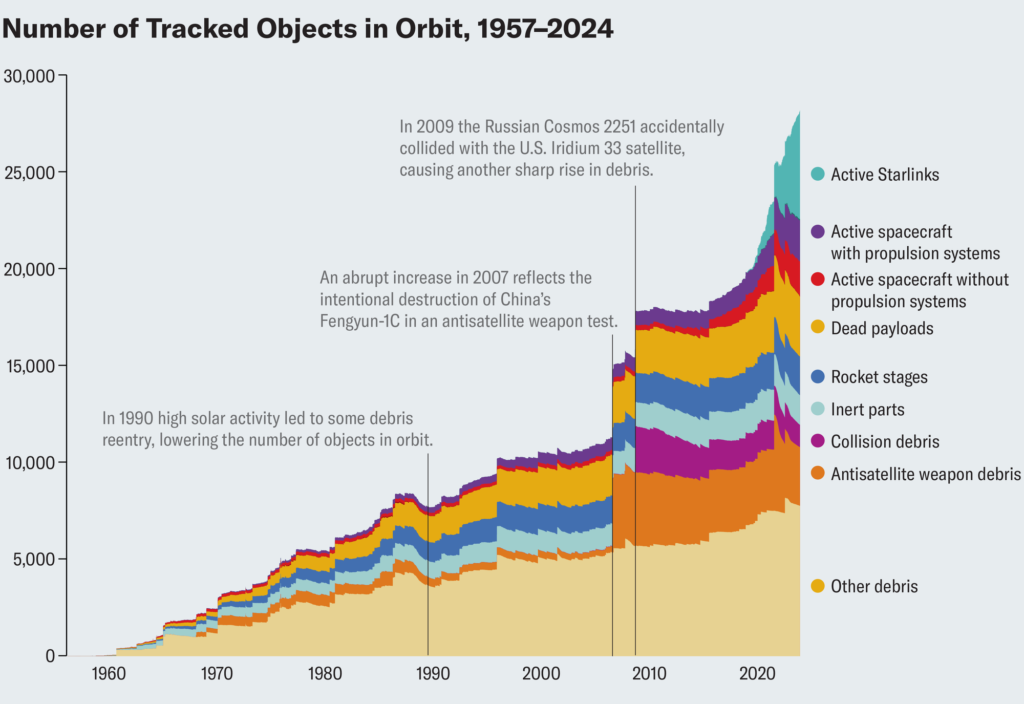The increasing human footprint in space has resulted in a concerning issue – space debris, also known as space junk. The U.S. Air Force currently tracks over 25,000 pieces of space junk larger than 10 centimeters, whizzing around Earth at an alarming speed of 22,000 miles per hour. This poses a significant threat to operational satellites and even public safety on Earth.

Escalating Problem
The situation is rapidly worsening. The number of orbiting satellites has surged from 6,500 just three years ago to nearly 10,000 today. A significant portion of this growth comes from Elon Musk’s SpaceX Starlink constellation, with over 6,000 satellites launched and plans for a much larger fleet.
Collision Course
Collisions between these satellites could have catastrophic consequences. Experts estimate such incidents could instantly double the amount of trackable debris, creating a ripple effect of smaller, yet highly dangerous, space junk. The economic impact is equally alarming, with potential damages reaching a staggering trillion dollars annually by the next century.

Urgent Need for Action
The growing urgency for a solution is undeniable. The current space exploration landscape is vastly different from the past. A new set of international regulations is critical to prevent space from mirroring the environmental damage inflicted on Earth. A treaty outlining clear responsibilities, limitations on space junk generation, and potential fines for violators is a crucial first step.
This is a collective challenge that demands global cooperation to ensure a sustainable future for space exploration and protect our planet.
Reference- Scientific American, National Geographic, The Guardian, The Verge






